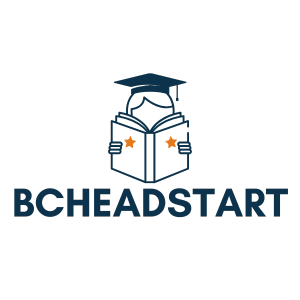In today’s diverse classrooms, co-teaching methods are like the dynamic duo of education. Picture Batman and Robin, but instead of fighting crime, they’re tackling learning challenges together. With two teachers in the mix, students get double the expertise, creativity, and support. It’s not just about sharing the workload; it’s about transforming the learning experience into something vibrant and engaging.
Imagine the possibilities when two educators collaborate to create lesson plans, share insights, and cater to every student’s unique needs. Co-teaching isn’t just a trend; it’s a game changer that promotes inclusivity and boosts academic success. So, if you’re ready to dive into the world of co-teaching methods, buckle up! This article will explore various strategies that can turn any classroom into a powerhouse of learning.
Table of Contents
ToggleOverview of Co Teaching Methods
Co-teaching has several effective methods, each tailored to enhance educational experiences in inclusive classrooms. Each method promotes collaboration between co-teachers to cater to diverse student needs.
Team Teaching encourages both educators to share instruction equally. In this model, both teachers actively participate in delivering the curriculum, creating a seamless learning experience for all students.
One Teach, One Support features one teacher leading the lesson while the other provides support to students. This approach allows the supporting teacher to offer individualized assistance, ensuring that no student falls behind.
Station Teaching divides the class into small groups, with each teacher responsible for a specific area of instruction. Students rotate between stations, engaging in different activities that reinforce their learning.
Parallel Teaching allows both educators to teach the same content simultaneously but in smaller groups. This strategy fosters more intimate interactions with students and enhances participation.
Alternative Teaching involves one teacher taking the lead, while the other works with a smaller group for re-teaching or enrichment. This method effectively addresses the varied learning paces of students.
Differentiated Instruction focuses on tailoring lessons to meet diverse learner needs. Co-teachers adjust content, process, and products based on student readiness, interests, and learning profiles.
The integration of co-teaching methods results in richer learning environments, making education more accessible for all students. Through varied strategies, co-teachers can effectively work together, ultimately improving academic outcomes and fostering inclusivity.
Types of Co Teaching Models

Co-teaching models enhance collaboration between educators, fostering diverse learning experiences. Here are several strategies to implement effectively.
Team Teaching
In Team Teaching, both educators share instructional responsibilities equally. This method promotes a seamless learning experience, allowing teachers to integrate their expertise. Collaborative lesson planning benefits students, as they receive varied perspectives on the same material. Engaging activities can foster higher levels of student participation. Shared responsibility in evaluating student understanding benefits the overall classroom dynamic. Teachers develop a stronger rapport and demonstrate a unified teaching approach.
Parallel Teaching
Parallel Teaching splits the class into smaller groups, with each teacher delivering the same lesson simultaneously. This method ensures individualized attention while maintaining a consistent curriculum. Smaller groups facilitate discussion and enable students to ask questions more freely. Engaging students becomes more manageable as teachers can tailor their approach to each group’s needs. Team teaching strategies within this model enhance student comprehension and retention of material.
Station Teaching
Station Teaching distributes the class into several groups, rotating between different activity stations. Each station addresses specific content, allowing teachers to focus on smaller clusters of students. This method encourages various learning modalities through different instructional methods, fostering creativity. Rotating stations keeps students engaged and motivated, as they interact with diverse activities. Teachers can assess student grasp in real time, adjusting instruction as needed based on individual progress.
Alternative Teaching
With Alternative Teaching, one teacher takes the lead while the other provides targeted support or enrichment. This method proves useful for re-teaching complex concepts or extending learning for advanced students. Smaller groups allow for personalized instruction, catering to specific learning needs. Teachers can implement differentiated strategies, ensuring each student receives appropriate challenges. The collaboration in this approach enhances both teachers’ ability to monitor student progress and adapt lessons effectively.
Benefits of Co Teaching Methods
Co-teaching methods offer significant advantages in enhancing the educational experience for both students and teachers. The collaborative nature of this approach fosters academic success and inclusivity.
Enhanced Student Learning
Improved learning occurs as teachers share expertise in co-teaching environments. Student engagement increases with diverse teaching strategies that cater to various learning styles. According to research, 80% of students in co-taught classrooms demonstrate higher academic performance than those in traditional settings. The immediate feedback provided by both educators supports student understanding and retention of material. Increased interaction among teachers leads to additional resources and tailored instruction, benefiting all learners.
Increased Teacher Collaboration
Collaborative teaching promotes professional growth among educators. Sharing ideas fosters innovative practices that enhance instructional effectiveness. Joint planning sessions encourage teachers to align their teaching methods and create a consistent learning experience. Educators report feeling more supported and empowered in co-teaching partnerships, which leads to job satisfaction. This teamwork ultimately leads to improved educational outcomes and enriches the overall teaching environment.
Diverse Learning Environments
Co-teaching creates inclusive classrooms that accommodate diverse learning needs. Flexibility in teaching approaches allows for adaptation based on student needs and preferences. Engaging in various strategies ensures that every learner receives personalized attention and support. Research indicates that students thrive in environments where multiple teaching perspectives are present, facilitating a deeper understanding of concepts. Additionally, varied educational experiences promote critical thinking and social skills, preparing students for future challenges.
Challenges of Co Teaching
Co-teaching presents various challenges that can impact its effectiveness in the classroom. Understanding these issues promotes better strategies for implementation.
Communication Gaps
Communication gaps often hinder co-teaching success. These gaps can occur due to differences in teaching philosophies or styles. Misunderstandings may arise when teachers lack clarity on their roles during instruction. Regular check-ins and open dialogue among educators can bridge these gaps, fostering a cooperative environment. Successful communication ensures both teachers support students effectively.
Planning Time Constraints
Planning time constraints present another challenge. Teachers might struggle to find time for collaborative lesson planning amid their busy schedules. Insufficient planning time can lead to poorly coordinated lessons that fail to meet student needs. Prioritizing shared planning sessions allows teachers to develop cohesive strategies and align their instructional goals. Establishing a consistent planning routine can mitigate this issue.
Differing Teaching Styles
Differing teaching styles often create friction in co-teaching partnerships. When one teacher prefers a structured approach while another favors flexibility, conflicts may arise. Both educators must work to blend their styles without compromising educational quality. Teachers can learn from one another by observing each other’s methods, potentially discovering new techniques that enhance student engagement. This collaborative spirit encourages adaptability and mutual growth.
Co-teaching is a powerful approach that enriches the educational landscape. By leveraging the strengths of multiple educators, it fosters an inclusive environment where every student can thrive. The various methods discussed not only enhance learning experiences but also cultivate collaboration among teachers, leading to professional growth and innovation.
While challenges exist, the benefits far outweigh the obstacles. With effective communication and shared planning, co-teaching can create dynamic classrooms that cater to diverse learning needs. As educators embrace this model, they pave the way for improved academic outcomes and a more equitable education system. Ultimately, co-teaching embodies a commitment to nurturing every student’s potential.

